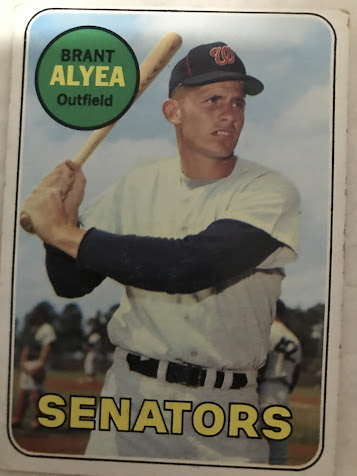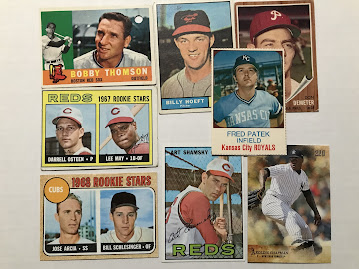The player: Like all the players in the 1940s section of this set, Enos "Country" Slaughter lost his prime years to the war, serving in the Army Air Force (he wanted to be a pilot, but was discovered to be color-blind and became a physical education instructor instead. In 1942 the Cardinals outfielder led the National League in hits and triples, and when he returned in 1946 he led the league in RBI. That year, in one of the most famous plays in baseball history, he scored the Series-winning run in the eighth inning of game seven, scoring from first on a single from Harry Walker, ignoring the coach's "stop" sign, while cutoff man Johnny Pesky hesitated before throwing home too late. (Various reports indicated Pesky was confused by other Red Sox players screaming at him, was surprised that Slaughter was trying to score, or was momentarily blinded by the sun.) He was traded to the Yankees after the 1953 season. After a year and a half in New York, he was sent to the KC A's, but returned for the 1956 stretch drive, with the Yankees releasing Phil Rizzuto to make room for Slaughter. In the 1956 World Series the 40-year-old Slaughter hit the game-winning home run in Game 3, and in Game 6 was the oldest player in Don Larsen's perfect game. He remained a valuable member of Casey Stengel's bench in '57 and '58, and ended his career with a brief stint with the Braves in 1959. He retired with a .300 average and 2,383 career hits.
The man: Slaughter was known for his hustle (he ran everywhere on the diamond, an inspiration for Pete Rose), and his aggressiveness. In 1947, the southern-born Slaughter spiked Jackie Robinson when he was turning a double-play. It was widely assumed that this was a racist act against Robinson. Slaughter was also rumored to have tried to get the Cardinals to boycott playing against Robinson. Slaughter always denied the rumors, during and after his playing career. Monte Irvin, who has called Slaughter a friend, said "One time he and Jackie got into a scuffle, and he told Jackie, "I'm not hard on you because you're black, but I'm hard on all rookies. He and Jackie got it all squared away and shook hands." Lou Brock has also called Slaughter a friend. After his retirement Slaughter was the baseball coach at Duke University for many years. He died in 2002.
My collection: I do not have any playing-days cards of Enos Slaughter. His last card as an active player was 1959 Topps #155.
















































